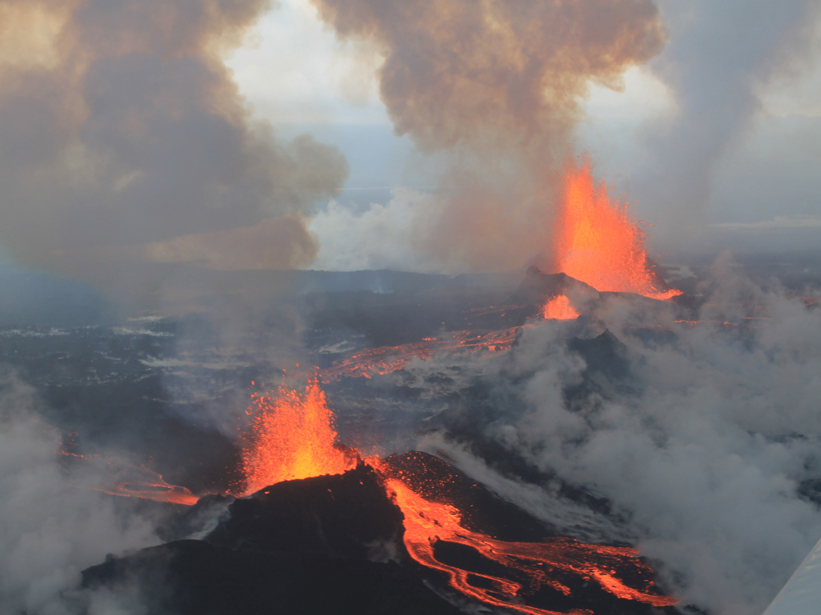Source: Journal of Geophysical Research: Solid Earth
In late August 2014, lava began to erupt from a fissure in the Holuhraun lava field, part of Iceland’s Bárðarbunga volcanic system. For the next 6 months, the eruption released sulfur dioxide gas into the atmosphere nearby, surpassing health limits and causing acid rain that rusted farm equipment. It released 1.6 cubic kilometers of lava—the largest eruption Iceland had seen in over 2 centuries.
The Holuhraun lava field lies above the mantle plume that drives Iceland’s volcanic activity. Few studies have measured sulfur dioxide gas flux from eruptions above mantle plumes. Now Gauthier et al. have found that during its first 3 months, the 2014–2015 eruption released an average of about 1130 kilograms of sulfur dioxide per second—the highest rate ever seen for a basaltic fissure eruption.
The team used thermal infrared data from the Spinning Enhanced Visible and Infrared Imager (SEVIRI) on board the geostationary Meteosat satellite to measure sulfur dioxide in the gas plume and calculate a release rate. They also used lava samples to compare magma sulfur levels before and after degassing and to infer how much sulfur dioxide must have been released.
Both of these methods are known to pose challenges; weather conditions and ash in the gas plume can complicate satellite measurements, whereas the lava sample method relies on an accurate estimate of the total amount of magma erupted. Often, the satellite method gives a much higher gas release rate than the lava sample method.
In this case, both techniques gave similar rates. Meteosat data showed a rate of 1200 kilograms of sulfur dioxide released per second, whereas the lava sample method gave a rate of 1050 kilograms per second. The few other mantle plume eruptions that have been studied in this way have also shown similar results for both techniques.
The scientists also directly sampled the gas plume to examine trace elements, which can pollute or fertilize nearby ecosystems when released by a volcano. It was the first time trace elements had been analyzed during an Icelandic eruption, and they found that tremendous amounts of toxic metals, including 6 tons of highly poisonous cadmium, had been degassed during the eruption in 2014. They also found that trace metals released at Holuhraun showed volatility similar to those released by eruptions of similar volcanic systems in Hawaii and Ethiopia.
The team also used the gas samples to measure proportions of radioactive isotopes. They found that a polonium isotope likely escaped during degassing of carbon dioxide from the magma beneath the central Bárðarbunga volcano, followed by shallow sulfur dioxide and hydrogen chloride degassing at Holuhraun. The data indicate that magma traveled at a speed of about 0.75 meter per second to the eruption site.
Besides causing health problems and acid rain, sulfur dioxide released by volcanoes can affect Earth’s climate. Studies like this one could lead to improved sulfur dioxide measurements and strengthen understanding of volcanoes’ impact on their surroundings. (Journal of Geophysical Research: Solid Earth, doi:10.1002/2015JB012111, 2016)
—Sarah Stanley, Freelance Writer
Citation: Stanley, S. (2016), Icelandic eruption caused record-breaking sulfur dioxide release, Eos, 97, doi:10.1029/2016EO047769. Published on 14 March 2016.
Text © 2016. The authors. CC BY-NC 3.0
Except where otherwise noted, images are subject to copyright. Any reuse without express permission from the copyright owner is prohibited.

